SEMIVESTITA var. SEMIVESTITA
Type : Seedling from a plant collected by Mr Robert J. Taylor in February, 1948, by the Pan American Highway about 25 miles north of Zimapan, Hidalgo, Mexico, at about 7'000 to 8'000 feet elevation. UC 985641.
Etymology : Lat. 'semi-' = half and 'vestitus' = clothed : for the pubescent leaves and the glabrous inflorescences.
Distribution : Mexico (Hidalgo, Nuevo León ?, San Luis Potosí).
First Description by Reid Moran in Cactus and Succulent Jorunal US 26 : 60. 1954 :
Stem to 20 cm or more tall, 1 – 2 cm thick, green, puberulent, producing roots and branches from the lower leaf scars.
Rosette of about 15 leaves, covering about 5 cm of the stem, the upper leaves close-set, the lower more scattered.
Rosette leaves dark green, often purple-margined, puberulent with simple hairs about ¼ mm long and sometimes enlarged at the tip, oblanceolate, acute, fairly keeled dorsally, channelled ventrally to within 1 cm of the base, 11 – 14 cm long, 1.5 – 3 cm wide, the blade 3 – 4 mm thick, the base subterete, 10 – 12 mm wide, about 1 cm thick, with a triangular spur 1 - 2 mm long but appearing longer as the leaf withers. Old leaf scars subcircular, about 12 mm wide, faint, the area of attachment and abscission subelliptic, 3 – 6 mm high, 9 – 12 mm wide, brown, conspicuous, the bundle scar solitary, subcircular, 2 – 3 mm wide.
Floral stems axillary, 30 – 55 cm tall, about 1 cm thick near the base but flaring somewhat to merge with the stem, grading from puberulent below through papillose at the base of the inflorescence to glabrous above, with 15 – 25 leaves below the inflorescence.
Cauline leaves green, puberulent, the lowest similar to the basal, 3.5 – 5.5 cm long, 2 – 2.5 cm wide, diminishing upward, those below the inflorescence elliptic, 2 cm long, 1 cm wide, intergrading with the bracts, which are glaucous, the upper essentially glabrous.
Inflorescence about 10 cm high and wide, of 6 – 9 cincinni, each about 5 cm long, with 6 - 9 flowers, all parts except the main axis and its bracts glabrous and glaucous. Bracts of the cincinni one per flower, at first imbricated on the under side of the sympodial axis, elliptic, acute, purple, glaucous, the lowest about 12 mm long and 5 mm wide. Lower pedicels 1 – 5 mm long, 2 – 3 mm thick, flaring upward.
Sepals free, ascending, elliptic-oblong, acute, not or scarcely narrowed at the base, purple, glaucous, unequal, the lower two smallest, nearly equal, 5 – 7 mm long, 2 – 2.5 mm wide, the two lateral nearly equal, 11 – 13 mm long, 4 – 5 mm wide, the upper 9 – 12 mm long, 3 – 4 mm wide.
Corolla conic, 12 – 13 mm long, 7 – 8 mm wide at the base, 3 – 5 mm wide at the mouth, coral pink, petals imbricate, connate 3 – 4 mm, lanceolate, acute, pink on keel and at tips, yellowish on edges and within, glaucous, about 3.5 mm wide, thick and strongly keeled, the inner surface flattish except for a hemispheric hollow at the base and a longitudinal furrow in which lies the stamen.
Filaments yellowish white, the free part about 4 mm long, epipetalous attached at upper edge of hollow, hence about 3 mm above base of petal, antesepalous attached at about the same level but more clearly distinguishable below, anthers yellow, 2 – 2.5 mm long, scales white, about 1 mm wide, pistils about 8 mm high, ovary white, 5 mm high, with numerous ovules on intruded placentae, styles green, 3 mm long.
Cytologie : n = 17
Echeveria semivestita differs from all other known species of Echeveria in having puberulent herbage and a glabrous inflorescence.
The bluish sepals of the buds are a unique feature in the genus.
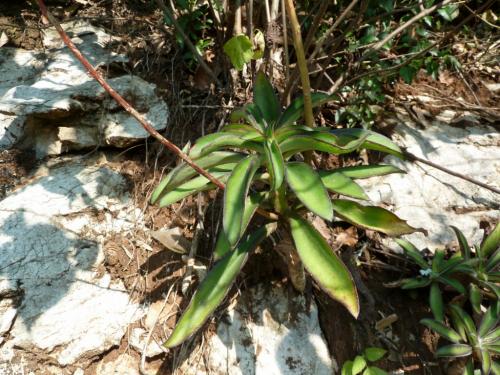
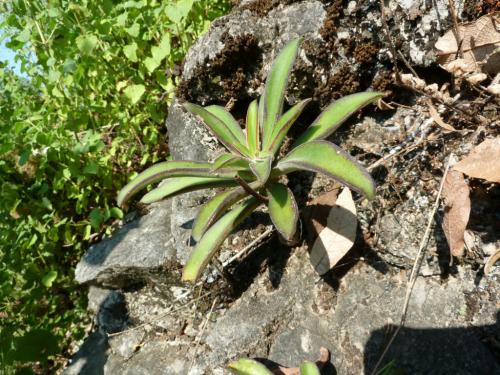
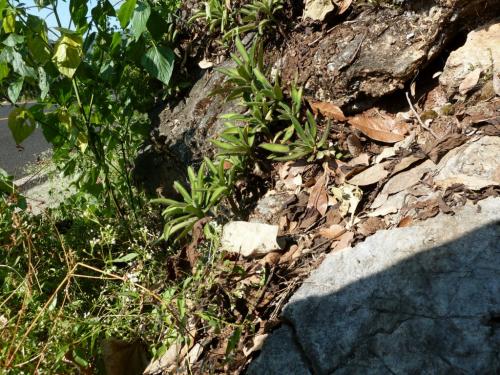
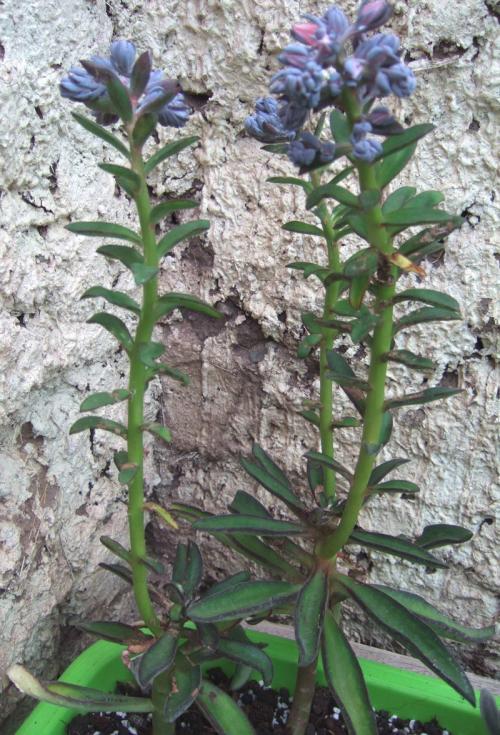
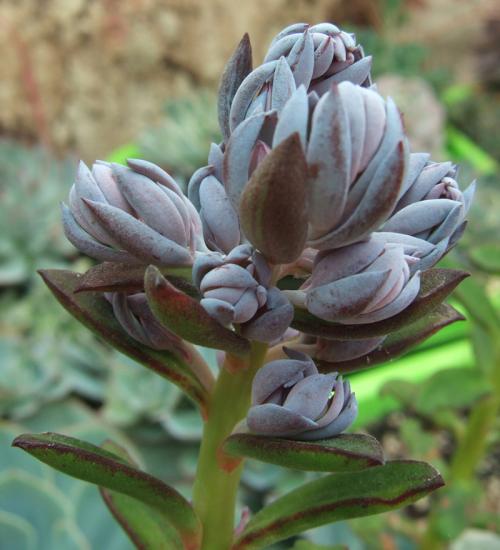
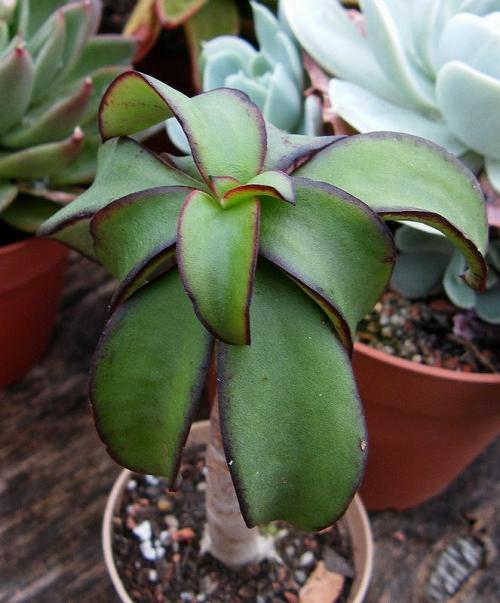
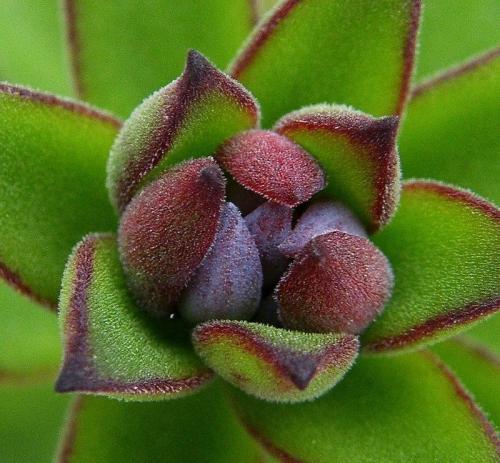
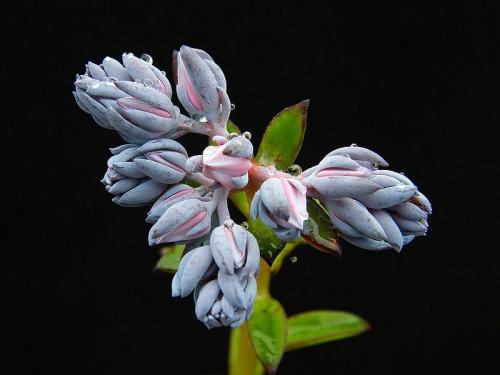
Photos Emmanuelle Aubé
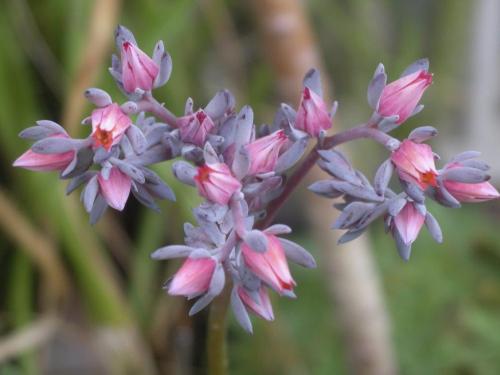
Photo Mateo Lichtenstein